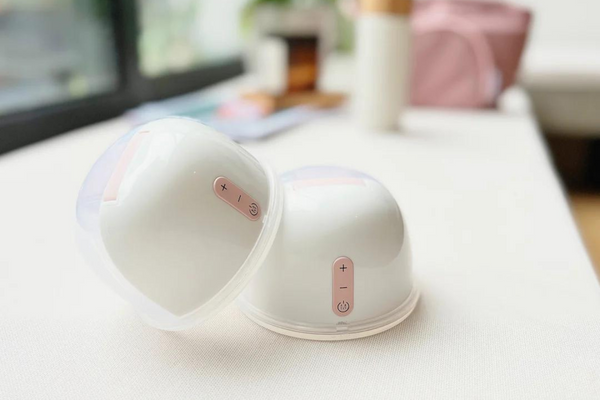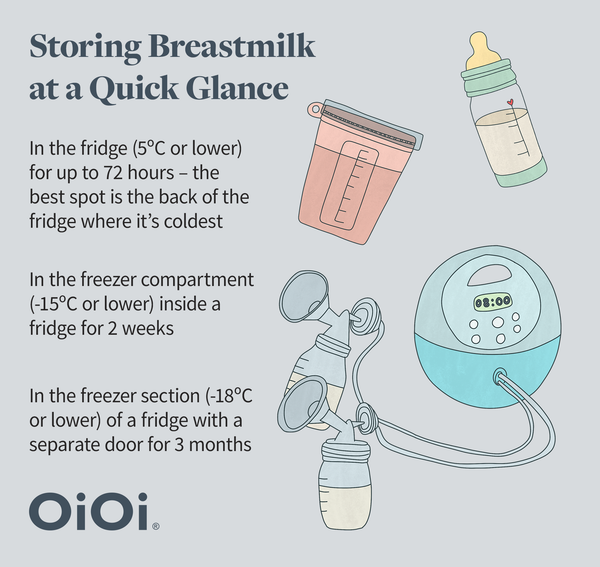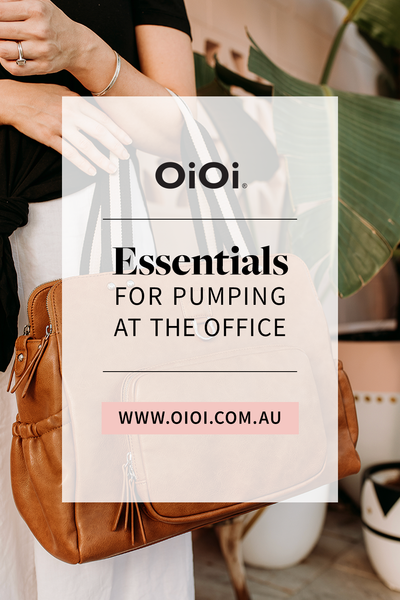
What's In My Work Bag | Essentials for Pumping At The Office
Something that was important to me when returning back to work was to continue my breastfeeding journey. I wanted to ensure that my son could continue to benefit from breast milk for as long as possible and adamant that I could make pumping milk, nurturing him and continuing my career work.
I have been very fortunate that it worked, and so here are my pumping essentials that I pack for work.
Best Breast Pump Bag for Working Mums
I absolutely love my OiOi Triple Tote Bag for Pumping! The zipped pockets are handy to keep the laptop and iPads safe, while still offering plenty of space for baby paraphernalia as well.
It’ll easily take you from baby bag to work bag. When I was pumping with my daughter, this bag easily fit my fancy but bulky Spectra breast pump and equipment too.
Finding the Right Breast Pump to Use at Work
Second time round, I have been acquainted with the Youha Embody Wearable Breast Pump, and MY GOD! I wish I had this before with my daughter. Now, using it for my son, it’s been super convenient because they’ve enabled me to be hands free and discreet. They are easily hidden under clothing, so no need to worry about having your nipples out for the world to see (not that, that should be a problem)
You’re now hands free to do a bit of work, or attend a meeting or be on the phone to get more done with your time. It also doesn’t take up much space in your work bag!
Use the code OiOi25 for $25 off any Youha Breast Pump.

What to Pack in Your Work Tote
- Laptop and iPad
- Chargers for both plus cables computer accessories e.g. mouse, keyboards, earphones/earbuds
- Notebook and pens
- Glasses/sunglasses
- Pocket tissues and wipes
- Small pouch with personal items, e.g. liners, breast pads, Panadol, hay fever tablets, spare hair ties, lip balm, perfume roll, mints
- Breast pump, breast milk bags, pen marker, pump bottles, cooler to store in fridge
- Water bottle
- Lunch and snacks - fruit, lactation cookies and lactation tea bags wallet and keys
- Spare shopping bag – handy for the grocery shop at the end of the day
Pumping at Work Schedule:
It can help to have a one-on-one chat with a lactation consultant, or your health professional to work out how much your baby may need to be offered as this depends on how old your child is and their individual needs.
As milk volume is created based on supply and demand, you want to tell your body that it still needs to produce milk at these times. Try and pump around the same time that you would normally be feeding your baby. If that’s not possible, try and pump at least once a day whilst at work, and plan another in the morning, or in the evening so you would have enough.
Here is my personal experience:
My son was in daycare around 10 months old. He would have 4 feeds a day. Breakfast, lunch, afternoon and bedtime. Because I would miss his lunch breastfeed, I would schedule a pump around my lunch time. This also allowed me to have a slightly longer break too!
Then at the end of the day, I would pick my son up from day care and give him a breastfeed as soon as we got home or even there at daycare before we left. It also gave us a chance to reconnect and wind down from our day.
Storing and Transporting Expressed Breastmilk: A Quick Guide

"You can transport expressed breastmilk between home and other places.
Expressed breastmilk can travel:
- in an insulated container like an esky or cooler bag with one or more freezer bricks
- either frozen or fresh – if the milk has thawed, use it within 4 hours and don’t refreeze it.
Place the labelled breastmilk in the fridge as soon as you arrive or in the freezer if it’s still frozen." - Raising Children Network
Managing the Mental Load of Pumping and Breastfeeding at work
Be kind and gentle to yourself. Sometimes it just feels impossible to do anything and everything. And then we somehow just make the impossible, possible. I find that is what being a mother is like.
Breastfeeding is hard enough as it is, and throw pumping into the mix and it’s a whole other level. You’re on a schedule, you’re booking meeting rooms, you’re cleaning and sterilising equipment and the list goes on. That’s just more added to your mental load. Be cautious of not burning yourself out.
You may find that your supply can drop while pumping, but please do not be alarmed. There are numerous factors that can contribute to this. More often than not, as milk volume is determined by supply and demand, usually a quick and easy solution to low milk supply is to increase feeding/pumping sessions. If you notice your baby is showing signs that they’re not getting enough milk and increasing your feeding and pumping times is not helping, then please ensure you reach out to your GP or lactation consultant for advice and help.
Your Rights and Resources for Breastfeeding at Work
We’re also incredibly fortunate to have easy access to resources when it comes to breastfeeding at work. Make sure to check in with these, here are some informative websites to also read through. They cover important topics such as your rights to breastfeeding at work and how best to store & use expressed breastmilk.
- The Australian Breastfeeding Association (ABA) is Australia's largest breastfeeding information and support service and is recognised worldwide as an authority on breastfeeding management. You will find a wealth of information for both parents and for health professionals on their website.
- This Better Health article provides information on breastfeeding and working. It covers topics such as the benefits of breastfeeding for both mother and baby, how to maintain breastfeeding while working, and provides tips for women returning to work after giving birth.
- This Fairwork article covers the legal rights of breastfeeding mothers in the workplace and provides resources for further support.
- The Mother's Milk Bank is a non-profit organisation in Australia that collects and pasteurises surplus breast milk from nursing mothers and supplies it to babies in need of human milk.
In addition to the above resources, in writing this article we also referenced:
Breastfeeding USA. (n.d.). How Much Milk Should You Expect to Pump? [Article]. Retrieved from https://breastfeedingusa.org/content/article/how-much-milk-should-you-expect-pump-0
Content disclaimer:
The information and other content provided in this blog, or in any linked materials, should not be construed as medical advice and it is not intended to replace advice from your doctor or other registered health professional. All users are urged to always seek advice from a registered health care professional for answers to their medical questions and to ascertain whether the particular therapy, service, product or treatment described on the website is suitable in their circumstances. The views, thoughts and opinions expressed in the text belong solely to the author, and not necessarily to the author's employer, organisation, committee or other group or individual.









Leave a comment